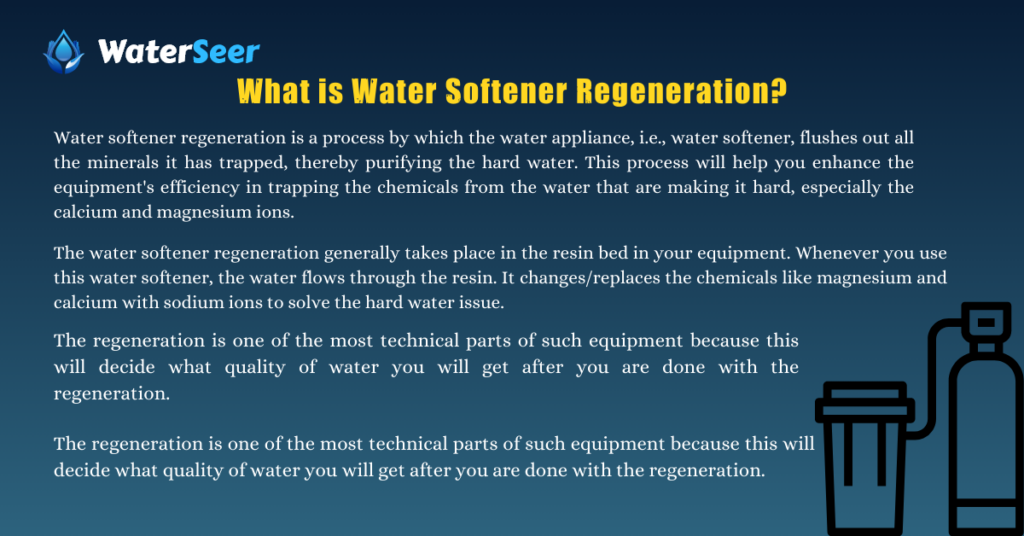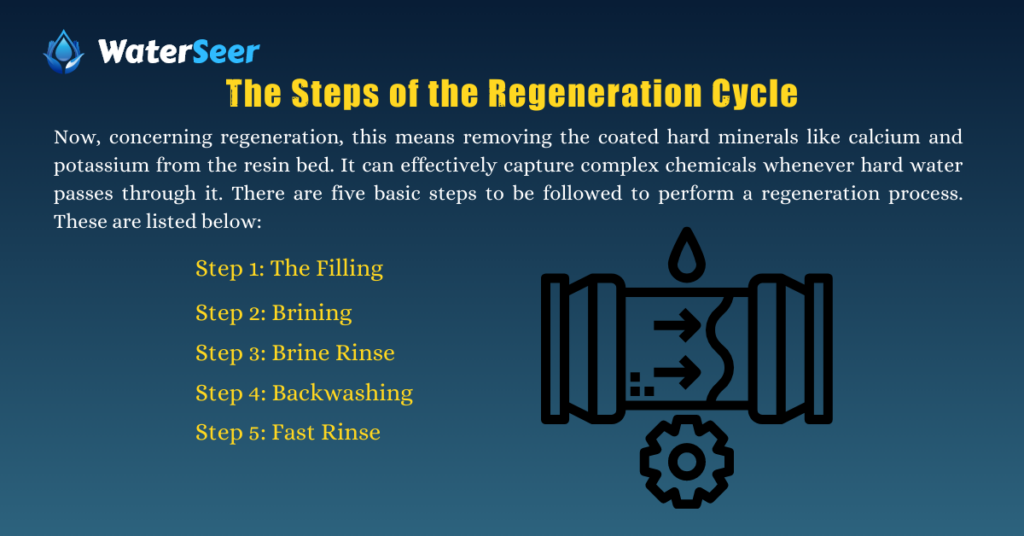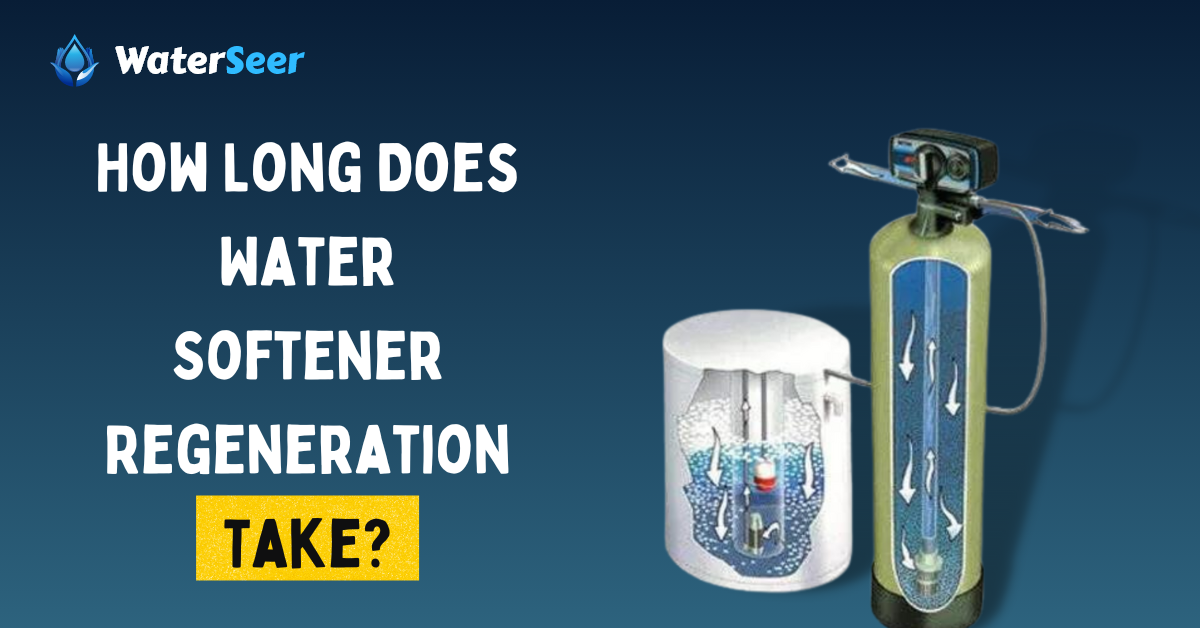People living in an area with a very high hard water problem generally prefer to install a water softener in their homes. The water softener helps to capture the chemical (like calcium and magnesium) that makes the water hard, thus significantly providing clean and healthy water.
However, it does not mean that once you have installed the equipment, you will get softened water lifelong. Therefore, to maintain the working and efficiency of the equipment, you will have to maintain the equipment properly to remove the chemicals.
The water softener resins need to be washed/flushed from time to time. The timing for service varies for one brand of equipment to another. For example, some will have a regeneration time of six months while others can have monthly or daily. Apart from this, regular maintenance is another critical aspect that enhances the efficiency of the product.
Follow the steps to enhance the durability and efficiency of the product, which will automatically save a lot of money from your pocket. But, before we move on to that, let’s get a hang of what a water softener is and how it works.
What is Water Softener Regeneration?

Water softener regeneration is a process by which the water appliance, i.e., water softener, flushes out all the minerals it has trapped, thereby purifying the hard water. This process will help you enhance the equipment’s efficiency in trapping the chemicals from the water that are making it hard, especially the calcium and magnesium ions.
The water softener regeneration generally takes place in the resin bed in your equipment. Whenever you use this water softener, the water flows through the resin. It changes/replaces the chemicals like magnesium and calcium with sodium ions to solve the hard water issue.
The regeneration is one of the most technical parts of such equipment because this will decide what quality of water you will get after you are done with the regeneration.
Due to the advanced technology, the manual work of checking the equipment has been cut down to just pressing a button, or sometimes the regeneration time is already pre-set.
Most of the equipment in the market generally has a flush button in the kit, which helps you flush all the clogged minerals trapped in the filter and block the pathway or the flow passage. Thus influencing the quality of water.
What is the Necessity of Regeneration?
If you are not doing the regeneration properly, the equipment will not effectively provide quality water (free from any hardness). But, if you have done it correctly, the water quality will be enhanced. Most of the equipment requires a block salt like HarveyArc needs 300 grams of salt, used during the regeneration of equipment. The cylinder/tanks of the equipment are cleaned thoroughly (multiple times) to prevent the flow of hard water in your home’s taps.
How Does Water Softener Regenerate?
Most water softeners consist of three components: the control valve, the mineral tank, and a brine tank.
The control valve monitors water flow. The mineral tank is responsible for removing the minerals like calcium and magnesium from the hard water to make it soft. The brine tank is responsible for cleaning the system through the regeneration process. So the regeneration process in the water softener takes place at the brine component.
The Steps of the Regeneration Cycle

Now, concerning regeneration, this means removing the coated hard minerals like calcium and potassium from the resin bed. It can effectively capture complex chemicals whenever hard water passes through it. There are five basic steps to be followed to perform a regeneration process. These are listed below:
Step 1: The Filling
This process requires around 5 to 10 minutes. Here, the water will fill and dissolve the salt. This process takes place in the storage area of the water softener, and the solution will be called brine. Finally, the salt will help flush the minerals trapped in the resin bead.
Step 2: Brining
This process will take around 30 to 60 minutes, depending on the brand and the age of the water softener. In this process, the brine will move from the salt Storage Area to the resin tank through waves and cycles. As mentioned earlier, brine is the main component that removes the beads’ hard minerals. So it will remove the mineral deposits and renew the beads entirely. This is the longest part of the regeneration process. After this process has been completed, the brine and hard minerals will be discharged through the draining system.
Step 3: Brine Rinse
This process will take around 5 minutes. In this step, the resin tank will rewash the tank; this time, the brine will be in a tiny amount of salt compared to step 2. This will help remove the leftover residue of minerals to ensure that the resin beads are entirely free from chemicals.
Step 4: Backwashing
This step will take around 10 minutes. In this step, the resin tank will be filled with water, and the equipment will automatically flush the tank multiple times to remove the brine or chemicals entirely from the tank. In addition, it will also help in removing the accumulated dirt, sediment, and iron components from the tank and flush them through the drainage system.
Step 5: Fast Rinse
This step will take around 10 minutes and will be the last process of the regeneration cycle. It will ensure that no component or other contamination is present in the tank or the equipment.
Based on the above scenarios, the regeneration process can take roughly 90-120 minutes.
Most of the equipment is programmed to perform the regeneration process during an appropriate time, like 2 am or 4 am, when the house owners are not using the water appliances.
The regeneration frequency depends on the hardness level, which fluctuates from one locality to another. Household water usage also plays a crucial role in figuring out the cycles of the regeneration process and how often it happens.
Around 35 to 65 gallons of water will be required to perform a regeneration cycle if you have a family of four members. The gallons of water value for the regeneration can increase depending on the size of the family and the water usage.
As we have discussed earlier in the about section, every brand has its regeneration period, which means that in some equipment, it can happen once per month. Still, it can also occur several times a day.
Apart from the above process, it is also crucial to check the manufacturer’s manual you must have received while buying the equipment. The manual might have come along with the packaging, or if you have lost it, then you can directly call the customer care center or visit the brand website so that you can get information about the regeneration process. Most of the time, all the equipment has the same regeneration cycle as discussed in this part.
How Can I Check if the Regeneration Process was Successful or Not?
Sometimes the water may become rusty after you finish the regeneration cycle. This means that there is an iron saturation in your resin bed. It signifies that the salt was not in the appropriate quantity in the tank, due to which the regeneration cycle didn’t appropriately happen. In such a situation, repeat the regeneration cycle with sufficient salt.
You can also buy a water hardness test kit to test if your water softener has been appropriately regenerated and is working fine. It can be readily available at home improvement stores; this will help determine if your regeneration process was successful.
What to Do if Your Water Softener Regeneration is Troubleshooting?
Sometimes due to internal issues, a regeneration cycle process cannot happen in the equipment, which can highly influence the water quality. If you are also facing such a problem, then go through the below-listed points:
- If regeneration cycles are not happening correctly (multiple times) or are not happening periodically, then make sure that you check all the water softener components. Ensure the bypass valve has been positioned perfectly to stop or restrict water flow.
- Also, ensure that the water softener is plugged in and installed correctly. There may be some problem with the salt content in the brine tank; make sure you have added enough salt to perform the regeneration and flushing process.
- The other option that may help in such a situation is to start the manual regeneration cycle by going through the manual. A step-to-step guide template will be provided by your manufacturer during your purchase.
- If your water softener doesn’t have a reasonable force to fulfill the brine tank’s water supply demand, the regeneration cycle can take a long time. If the pipe is clogged, you must call professional help to change the pipe.
- The regeneration cycle is fundamental, so we recommend you fulfill the requirement to get better quality water. There is no use in installing a water softener if you are not performing the regeneration cycle.
- Suppose you believe that none of the above factors/ points has any issue. In that case, you might have some time in the timer system, blockage in the draining house, insufficient water in the brine tank, contaminated resin bed, salt bridging, motor failure, or an issue with the brine injector.
- In this situation, we recommend you contact your manufacturer and take advantage of the warranty or replacement options provided by the manufacturer. If you don’t have any warranty or replacement guarantee, then you have to buy other parts of this equipment.
Can You Use the Water Software During the Regeneration Cycle?
Yes, you can use the water software during the regeneration cycle. Generally, due to advanced technology, the majority of the equipment has the pre-installed mechanism (by the manufacturer) to perform the regeneration process at a particular time in which the water is not being used, for example, at 2 am, 3 am, etc.
Apart from this, if (the time of regeneration) is in the daytime, then you may want to use the water at the same time when the equipment is performing the regeneration process. To answer this question, yes, you can use the water while the equipment is doing the regeneration process, but the water will not be soft.
Can I use the Water Flushed out After the Regeneration Cycle from the Equipment?
Yes, of course, you can use the water flushed out after the regeneration cycle. As we mentioned earlier, around 75 gallons of water gets wasted during the regeneration cycle, so if you don’t want to waste this much water, you can always use this water.
However, we will never recommend you use this water for drinking purposes. But there are other options like flushing in washrooms, washing hands, laundry, bathing, gardening, etc.
Conclusion
The regeneration process is a crucial element of a water softener to provide clean and quality water. Generally, in a water softener, the resin beads replace the calcium and magnesium ions (the main Chemicals for making the water hard) with the sodium ions. It thus provides you with softener water.
Due to continuous usage of the water softener, after some time, these resins get blocked by excessive calcium and magnesium, which impacts the efficiency and effectiveness of the water softener in removing the hardness.
To free the resins from such chemicals, a regeneration process is performed. This process requires five significant steps, as discussed in this article. We hope that this article has helped you gain knowledge about the regeneration cycle and you will use this knowledge in the future.
FAQ’s
Can you shower when the water softener is running?
Yes, you can shower when the water software runs the regeneration cycle. But the only problem will be the water will be hard, or it will be the same as the municipality department supplies the water to all the houses. If you want to avoid showering from the hard water, we recommend waiting until the recycling or the regeneration process has been completed.
How long does soft water last after regeneration?
In most modern water softeners, it takes around 2 hours. But this timing can vary from one brand to another brand’s equipment.
Do water softeners waste a lot of water?
Yes, the water softener wastes water during the regeneration cycle. As mentioned in this article, rinsing and refilling the tank with water is a normal process during the regeneration cycle, which happens multiple times. But you can always use this water for other purposes like washing clothes, gardening, etc.
How often should my water softener regenerate?
The regeneration of water softeners can happen weekly or monthly. The timing varies from one brand to another. But we will always recommend that once you feel that the water softener is not working correctly, you can perform the regeneration cycle manually to enhance its efficiency.
How do I know if my water softener regenerated?
To confirm the water softener regeneration process, you can use a water hardness test kit that is readily available in the stores. This is the best and the most cost-efficient way to determine the success of the regeneration cycle. Apart from this, the water is still hard if you find stains in the shower nozzles, the taps, utensils, etc., after a few days of the regeneration cycle. These signs show that the water has a very high amount of calcium and magnesium. You need to repeat the regeneration process.

